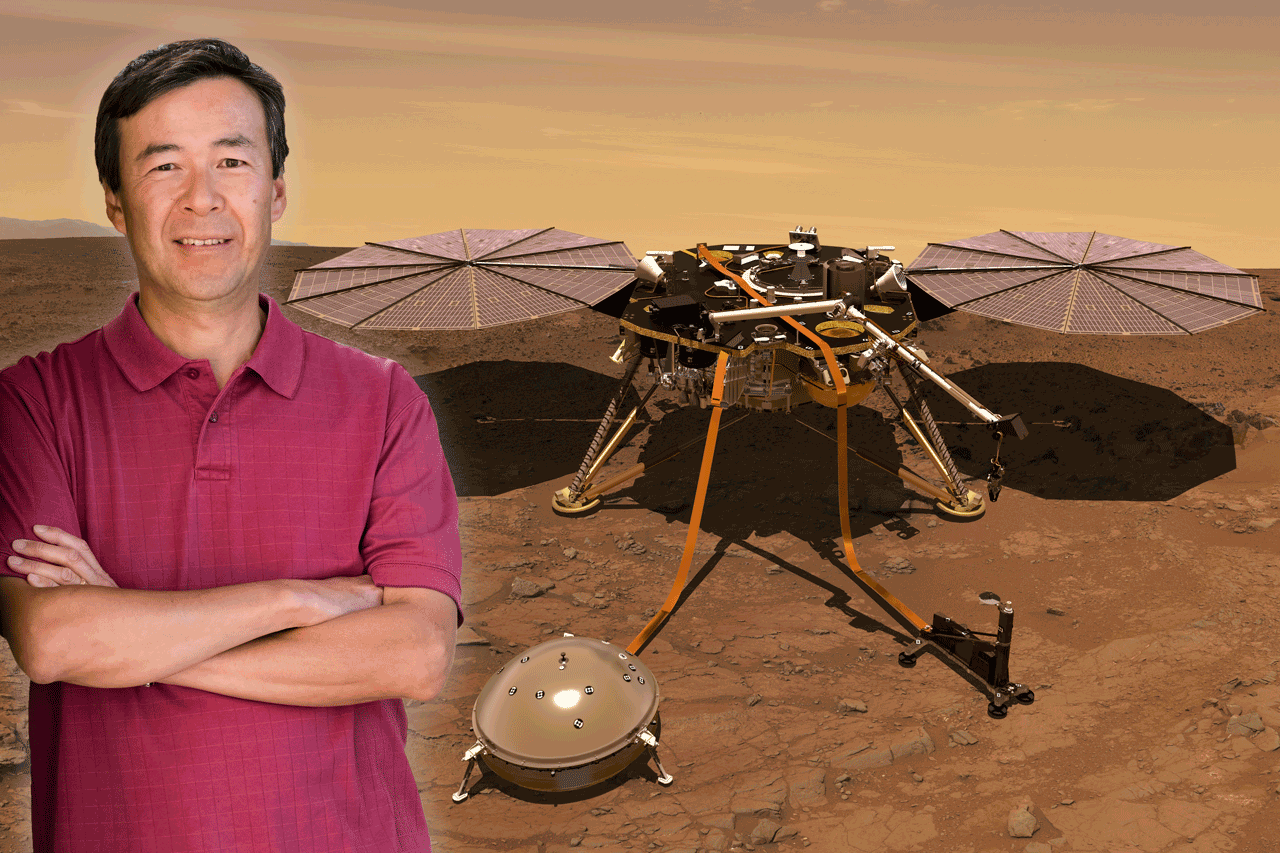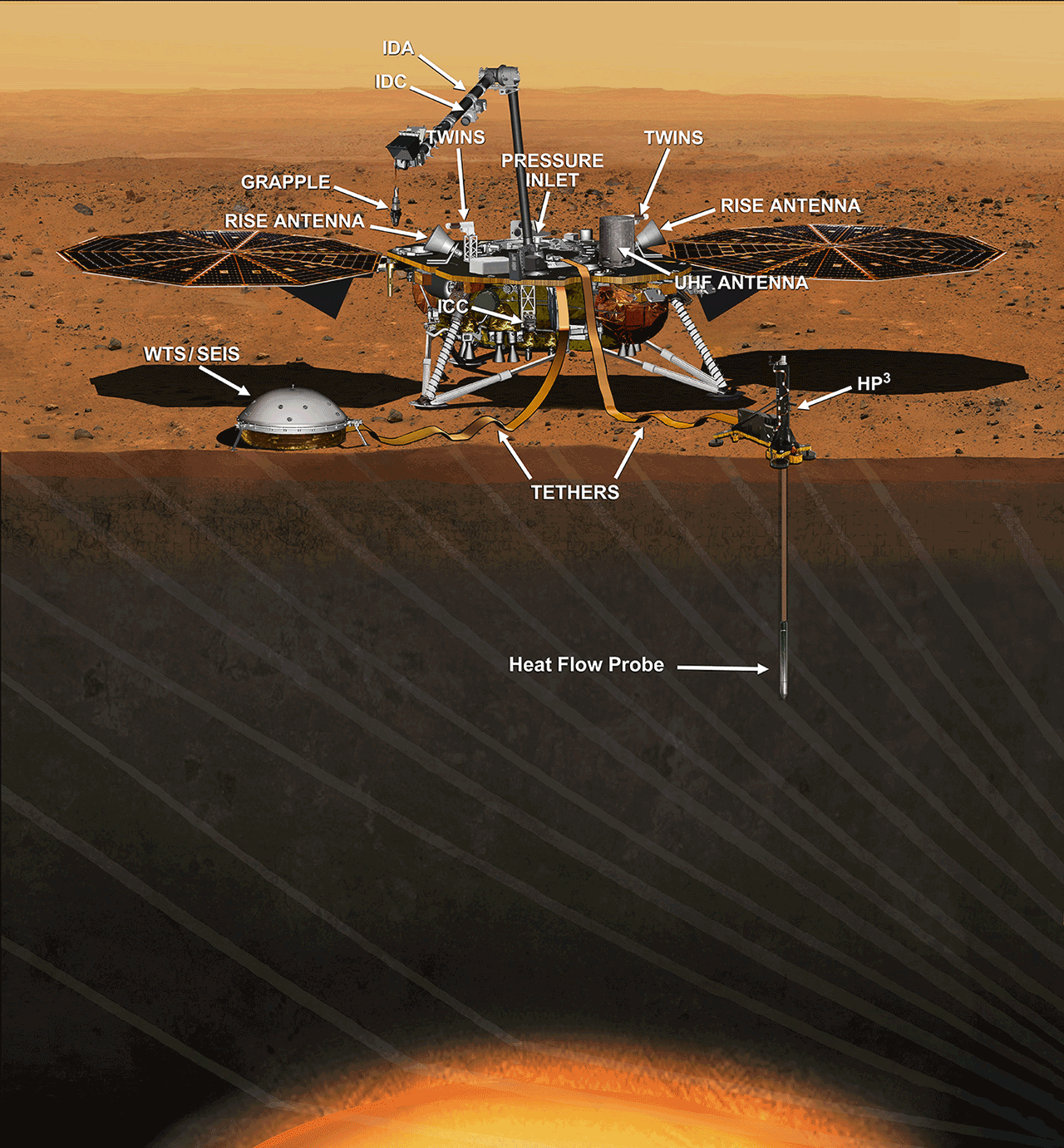Probing Mars

Photo Illustration: Photo of TTU Geophysicist Seiichi Nagihara with NASA/JPL-Caltech Artist's Conception of the InSight Lander on Mars.
Seiichi Nagihara Tapped by NASA to Study Mars Beneath the Surface
Written by Toni Salama
Despite NASA's many missions to Mars, none has gone beneath the surface to study the planet's interior. If all goes well, that changes at 2 p.m. Central on Nov. 26, when the Mars InSight Mission is scheduled to land at Elysium Planitia. The Atlas V-401 rocket carrying the InSight lander left Earth May 5 from Vandenberg Air Force Base in California.
Texas Tech geophysicist Seiichi Nagihara recently was selected by NASA to join the team that will study data never before collected on the red planet.
"There have been many missions to Mars, but this one is different from the rover missions," says Nagihara, an associate professor of geophysics in the Department of Geosciences. "This mission will probe beneath the planet's surface for the first time."
Unlike previous Mars missions, InSight is not rover-based but lander-based, Nagihara says; InSight will remain where it lands to collect its data. Scientists will use the lander's camera to analyze the best place to deploy two mission-critical pieces of equipment: first, a seismometer; and second, a heat flow probe.

Illustration: NASA/JPL-Caltech Artist's Annotated Conception of the InSight Lander on Mars.
"A seismometer will be deployed to detect and monitor Marsquakes, the Martian equivalent of earthquakes," Nagihara explains. "Seismological data gives you an idea of the mechanical properties of the body of the planet at different depths."
Then, with the seismometer's placement taken care of, the team hopes to drill a hole 5 meters (more than 16 feet) deep, into which a heat flow probe will be inserted. That is expected to come sometime in mid-January, if the mission goes according to plan.
"The heat flow probe will measure the thermal properties at incremental points on its way down," Nagihara says. "This allows us to extrapolate the flow of heat out of the planet the rest of the way to the core, hopefully."
Related Work
Nagihara describes himself as a geophysicist who is interested in the heat coming out of a planet, any planet. "I did this on Earth for many years and then with data from the Apollo missions for the Moon."
He was the lead author on the recent study, "Examination of the Long-Term Subsurface Warming Observed at the Apollo 15 and 17 Sites Utilizing the Newly Restored Heat Flow Experiment Data From 1975 to 1977," which published May 8 in the Journal of Geophysical Research: Planets. And he's already working to develop a heat flow probe that might one day take thermal measurements on the subsurface of Europa, Jupiter's ice-covered moon—thanks to a three-year, $955,835 grant from NASA he received in 2017.
In reaching out to Mars, Nagihara will be on the team that decides which experiments to conduct and what data to collect. It will be familiar territory in the sense that "there's a commonality between the planetary heat flow instruments and what we expect them to do," he says.
Ultimately, the information that NASA scientists glean from the InSight Mission will provide clues to how the planet came into being and reveal a more detailed timeline on how Mars has evolved to its present stage.
The amount of data they are able to collect will depend, in part, on how long the equipment lasts. The other part is more a matter of vantage point: "The primary mission is two years on Earth," Nagihara says, "but only one year on Mars."
![]()
College of Arts & Sciences
-
Address
Texas Tech University, Box 41034, Lubbock, TX 79409-1034 -
Phone
806.742.3831 -
Email
arts-and-sciences@ttu.edu
